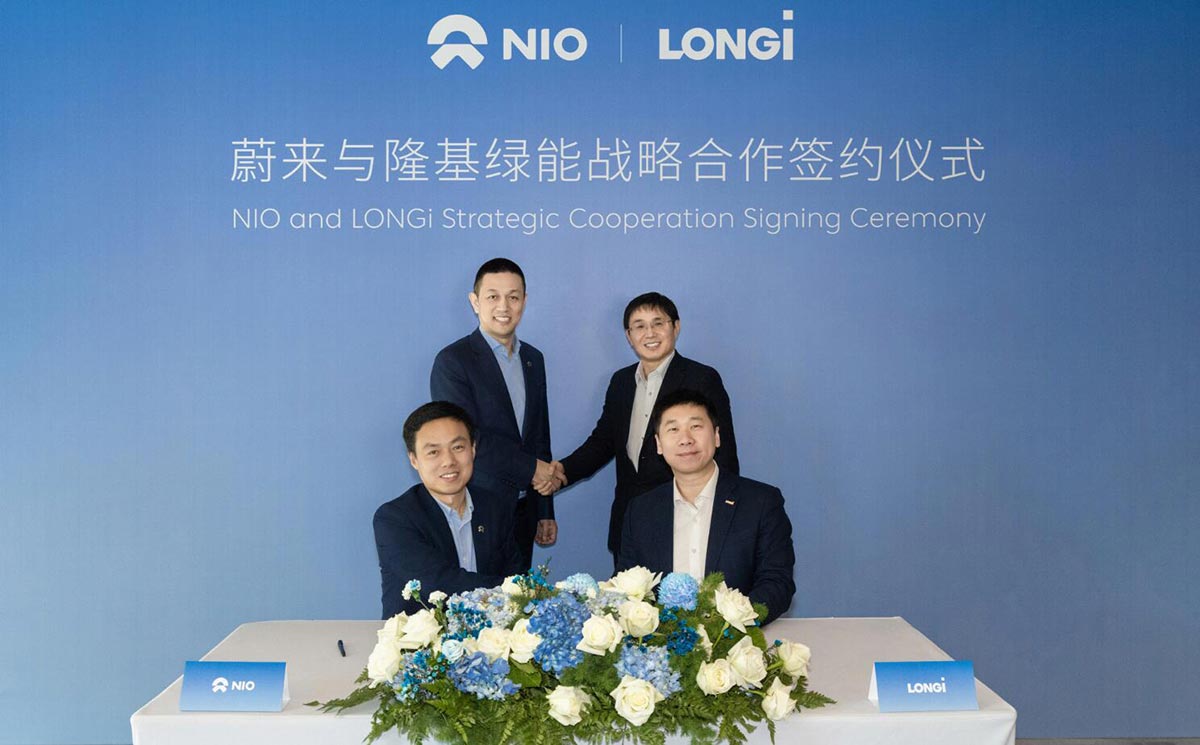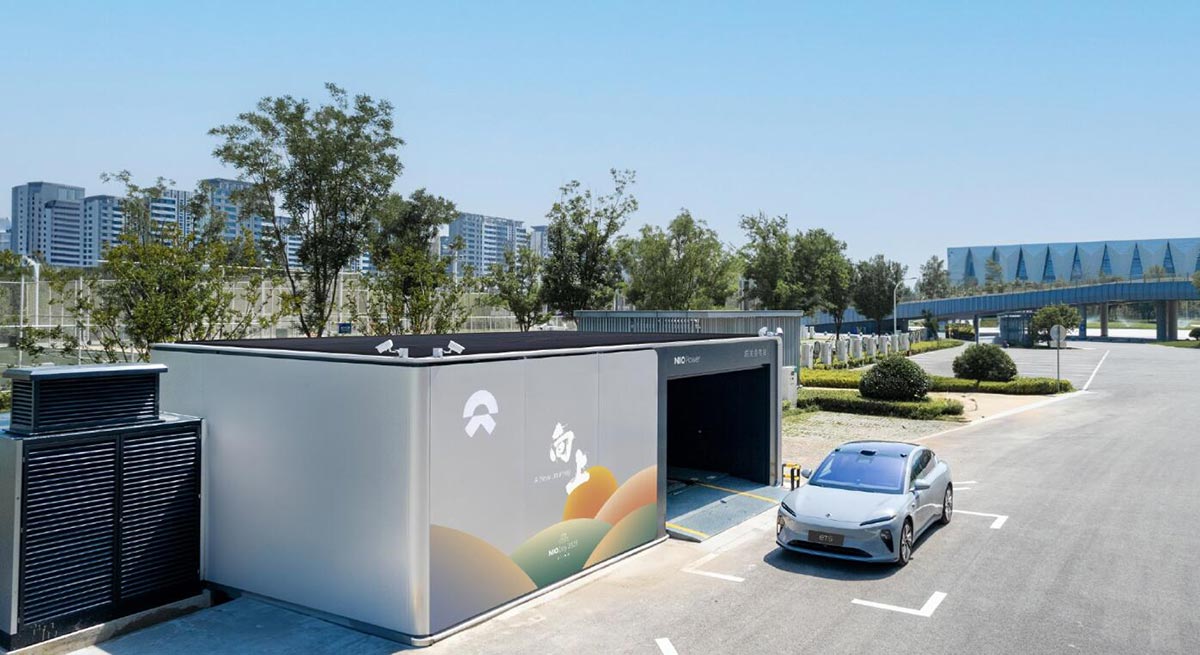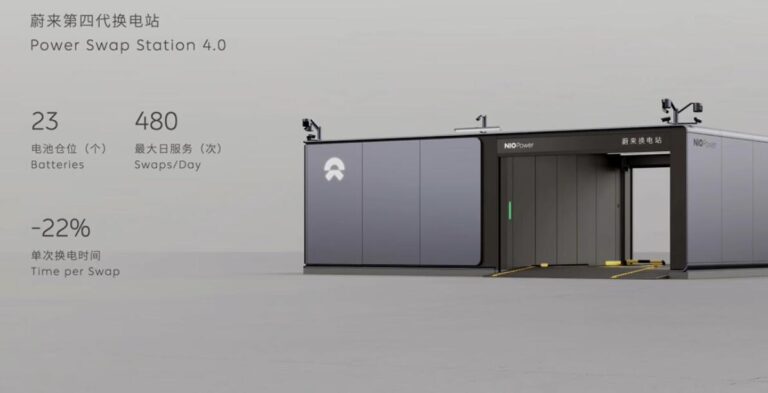Nio's fourth-generation battery swap stations will be equipped with 60 square meters of photovoltaic systems, which will save nearly 18,000 kWh of electricity per year per station.
(Image credit: Nio)
Nio (NYSE: NIO) has signed a partnership agreement with Longi Green Energy Technology to use the Chinese solar panel maker's products on its battery swap stations.
Nio and Longi signed a strategic cooperation agreement that will see the two companies work together to promote the use of photovoltaic power at charging stations and battery swap stations, according to a statement from the electric vehicle (EV) maker today.
The two companies will also work together on V2G (vehicle to grid) and the establishment of industry standards for carbon-neutral mobility to help achieve peak carbon and carbon-neutral goals in the transportation sector, according to the statement.
The first HPBC (Hybrid Passivated Back Contact) photovoltaic battery swap station built by the two companies was put into operation at the Olympic Sports Center in Xi'an, Shaanxi province in northwest China, Nio said.
"Nio's strategic partnership with Longi will drive the further popularization of photovoltaic power generation in the automotive industry," said William Li, Nio's founder, chairman and CEO.
This will help enable more new energy vehicles (NEVs) to use photovoltaic power as their primary energy source, contributing to the development of the smart EV industry, Li said.
Longi, headquartered in Xi'an, is the world's largest photovoltaic company by market capitalization.
Longi's products are used at Tesla's Giga Austin in Texas, local media outlet Yicai said in a report on January 5, 2022, citing a person familiar with the matter.
The Tesla factory already had a lot of solar products from Longi in it, the report said.
Nio unveiled the fourth-generation battery swap station at Nio Day 2023 on December 23, which will be equipped with 23 battery compartments and will increase the capacity to 480 services in a single day, reducing the time per service by 22 percent.
Nio will equip the fourth-generation stations with 60 square meters of photovoltaic systems, which will save nearly 18,000 kWh of electricity per year per station, according to the company.
Installation of the new generation of stations will begin in April 2024, Nio said on December 23.
Notably, Nio started working on equipping its battery swap stations with photovoltaic panels more than 2 years ago.
Unisun Energy, a provider of distributed clean energy power plant solutions, announced on October 20, 2021, that it signed a deal with Nio to install rooftop distributed photovoltaic products on the EV maker's second-generation battery swap stations.
The average capacity of each PV plant that Unisun installs on the roofs of battery swap stations for Nio is 100 kW, according to the October 2021 announcement.
By the end of 2025, when Nio has more than 3,000 battery swap stations in China, the total photovoltaic capacity on the rooftops of these facilities will reach 300MW, Unisun Energy previously said.
As of today, Nio has 2,325 battery swap stations and 3,603 charging stations in China, according to the latest data from its charging map.



